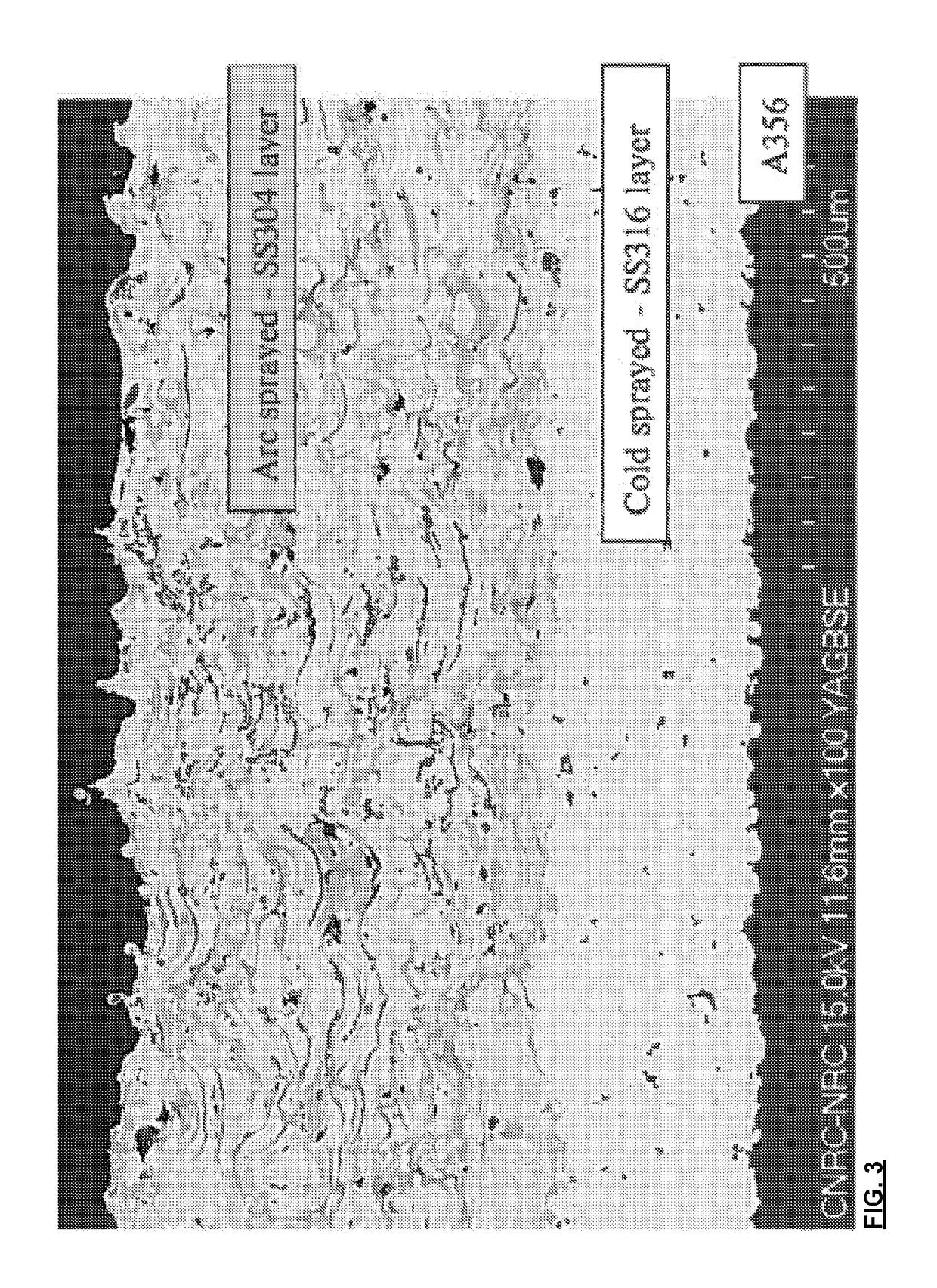Bi-layer iron coating of lightweight metallic substrate
a lightweight metallic substrate and bi-layer technology, applied in the application, superimposed coating process, braking discs, etc., can solve the problems of inability to withstand the environment of a brake, inability to apply a coating, and inability to withstand a brake environment, etc., to achieve good wear properties, improve the adhesion of thick iron coatings, and maintain the effect of friction coefficien
- Summary
- Abstract
- Description
- Claims
- Application Information
AI Technical Summary
Benefits of technology
Problems solved by technology
Method used
Image
Examples
examples
[0050]FIG. 3 shows a cross-section micrograph of a duplex (bond / WRFC) coating on an aluminum A356 substrate, in accordance with an example of the present invention. The A356 substrate appears dark and has an apparently rough meeting surface (where the A356 surface meets the cold-sprayed SS316 layer), which is evident by the piece-wise curved profile at the A356 / SS316 interface cross-section. The interface is typical of a cold-sprayed or warm-sprayed coating. The energy of the particles colliding with the softer substrate allows for substantial deformation of the substrate, leading to a cratered interface. The bond coat is a cold gas dynamic sprayed coating composed of stainless steel SS316L. The cold gas dynamic sprayed bond coat displays good adhesion to the substrate, and, because of its low porosity, acts as a barrier to improve resistance to blister corrosion at the bond coat-substrate interface. The WRFC has been found to provide good wear properties. The micrograph shows a typ...
PUM
| Property | Measurement | Unit |
|---|---|---|
| thickness | aaaaa | aaaaa |
| thick | aaaaa | aaaaa |
| thick | aaaaa | aaaaa |
Abstract
Description
Claims
Application Information
 Login to View More
Login to View More - R&D
- Intellectual Property
- Life Sciences
- Materials
- Tech Scout
- Unparalleled Data Quality
- Higher Quality Content
- 60% Fewer Hallucinations
Browse by: Latest US Patents, China's latest patents, Technical Efficacy Thesaurus, Application Domain, Technology Topic, Popular Technical Reports.
© 2025 PatSnap. All rights reserved.Legal|Privacy policy|Modern Slavery Act Transparency Statement|Sitemap|About US| Contact US: help@patsnap.com



